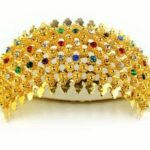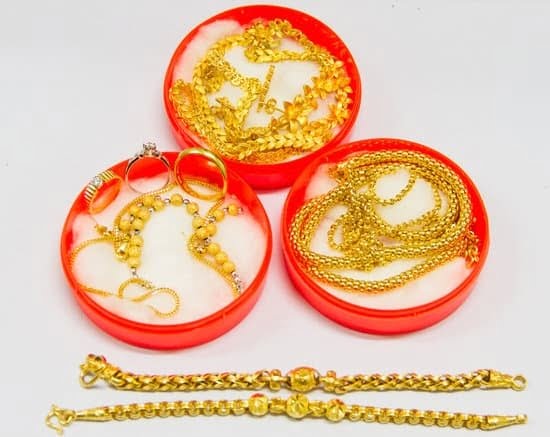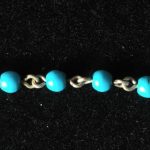History of beloved jewelry dates back to ancient times, where ornamental pieces held great significance in various cultures and societies. From traditional to modern designs, these accessories have evolved over time, reflecting the changing trends and styles. This article delves into the captivating journey of beloved jewelry, tracing its origins, cultural significance, famous pieces throughout history, and its influence on fashion, art, and literature.
Ancient jewelry has a rich history that dates back thousands of years, with each piece carrying its own symbolism and meaning. From ancient Egypt to Mesopotamia, ornaments were not only worn for adornment but also held religious, cultural, and social significance. As we trace the evolution of jewelry from these traditional designs to modern-day accessories, we uncover the artistic craftsmanship and technological advancements that have shaped this beloved industry.
Moreover, beloved jewelry holds a special place in various cultures around the world. Different societies have their own unique traditions and customs linked to these accessories, showcasing the deep-rooted symbolism attached to them. Whether it’s a wedding ring or a family heirloom passed down through generations, these beloved accessories carry stories of love, heritage, and tradition. Join us as we embark on an enchanting journey through the fascinating world of jewelry – from ancient artifacts to contemporary fashion statements.
Ancient Jewelry
Early Beginnings
The history of beloved jewelry dates back to ancient civilizations, where ornaments were crafted using materials such as shells, stones, and bones. These early jewelry pieces held deep significance in the lives of the people who wore them, often symbolizing social status, protecting against evil spirits, or serving as religious symbols. For example, in ancient Egypt, both men and women adorned themselves with jewelry that not only enhanced their beauty but also represented prosperity and protection.
Cultural Symbolism
Across various cultures and civilizations, jewelry played a crucial role as a form of expression and communication. In many societies, certain jewels were worn during specific rituals or ceremonies to symbolize important life events such as marriage, childbirth, or coming-of-age.
The intricate designs and motifs found in ancient jewelry reflected the values, beliefs, and cultural traditions of each civilization. For instance, in the Roman Empire, jewelry was not only a symbol of wealth and status but also signified allegiance to certain deities.
Legacy and Influence
The legacy of ancient jewelry continues to influence modern designs and trends. Many contemporary jewelers draw inspiration from historical ornaments to create pieces that pay homage to the craftsmanship and symbolism of the past.
Additionally, museums around the world house collections of ancient jewelry that serve as a reminder of our rich cultural heritage and provide valuable insight into the artistic techniques used by our ancestors. The history of beloved jewelry is a testament to human creativity and ingenuity throughout the ages.
Evolution of Jewelry
The evolution of jewelry from traditional to modern designs is a fascinating journey that reflects the changes in society, culture, and technology over time. Throughout history, jewelry has been a symbol of status, wealth, and personal expression. From ancient times to the present day, the styles and materials used in jewelry have continuously evolved, influenced by various factors such as artistic movements, trade routes, and technological advancements.
In ancient times, jewelry was crafted using materials such as shells, bones, and natural stones. These early pieces were often made for ceremonial or religious purposes and held significant cultural and spiritual value. As civilizations progressed, the art of jewelry-making advanced as well. The use of precious metals like gold and silver became more common, leading to intricate designs that showcased craftsmanship and creativity.
During the Renaissance period in Europe, there was a revival of interest in classical art and culture. This sparked a renewed appreciation for ornate jewelry designs inspired by ancient Roman and Greek motifs. The Baroque and Rococo periods also saw a flourish of elaborate jewelry styles adorned with gemstones and pearls.
In the modern era, industrialization brought about new techniques for mass-producing jewelry, making it more accessible to different social classes. The Art Nouveau movement introduced innovative forms inspired by nature, while the Art Deco period embraced geometric shapes and bold colors. Today, contemporary designers continue to push boundaries with experimental materials and unconventional designs that cater to diverse tastes and lifestyles.
| Evolution of Jewelry | From Traditional to Modern Designs |
|---|---|
| Jewelry made from shells, bones,and natural stones | Early pieces made for ceremonial or religious purposes |
| Use of precious metals like gold and silver | Intricate designs showcasing craftsmanship |
| Renaissance period saw revival of interest in classical art | Ornate jewelry designs inspired by ancient motifs |
Cultural Significance of Jewelry
Jewelry has always held significant cultural importance throughout history. From ancient civilizations to modern society, jewelry has been a symbol of status, wealth, and tradition. Different cultures have unique customs and beliefs associated with jewelry, making it an integral part of their identity and heritage.
For example, in ancient Egypt, jewelry was not only worn for adornment but also believed to offer protection and carry religious symbolism. Similarly, in Indian culture, specific pieces of jewelry are traditionally worn during weddings and other important ceremonies to symbolize prosperity and blessings.
Moreover, various materials used in jewelry-making have different meanings across cultures. For instance, gold is often considered a symbol of wealth and royalty in many societies, while jade holds spiritual significance in Asian cultures. Understanding the cultural significance behind beloved jewelry provides insight into the values and traditions of different communities.
In addition to symbolism, jewelry also serves as a way to preserve traditions and pass down stories from one generation to another. Family heirlooms often hold sentimental value as they connect individuals to their ancestors’ history and legacy. The intricate designs and craftsmanship of historical ornaments reflect the artistic skills and cultural influences prevalent at the time they were created.
| Beloved Jewelry | Cultural Significance |
|---|---|
| Ancient Egyptian Amulets | Protective symbolism; religious significance |
| Indian Wedding Jewelry | Symbolizes prosperity; blessings for marital life |
| Etruscan Gold Jewelry | Represented status; buried with the deceased for afterlife |
Famous Jewelry Pieces Throughout History
Jewelry has been an integral part of human civilization for centuries, with each era leaving its mark through iconic and timeless pieces. From ancient civilizations to modern times, the history of beloved jewelry is rich and fascinating, showcasing the creativity, craftsmanship, and significance of these accessories.
Some of the most famous jewelry pieces throughout history include:
- The Hope Diamond: This legendary blue diamond is known for its stunning size and infamous curse, making it a widely recognized and revered piece of jewelry.
- The Imperial State Crown: Worn by British monarchs during their coronation ceremonies, this crown is adorned with precious gemstones that hold historical and symbolic significance.
- The La Peregrina Pearl: Once owned by Spanish royalty, this pear-shaped pearl has a tumultuous history and was famously worn by actress Elizabeth Taylor.
These are just a few examples of beloved jewelry pieces that have stood the test of time and continue to captivate people with their beauty and stories. Each piece carries with it a unique narrative that adds to the allure of historical jewelry.
The legacy of these famous jewelry pieces serves as a reminder of the enduring appeal and cultural importance of beloved accessories throughout different periods in history. Their influence can still be seen in modern jewelry designs, inspiring contemporary artisans to create their own timeless masterpieces.
Jewelry in Art and Literature
Jewelry has long been a source of inspiration for creative minds in the world of art and literature. Throughout history, artists and writers have found inspiration in beloved jewelry, using it as a symbol of wealth, status, love, and power. From ancient times to the present day, jewelry has played a significant role in shaping creative expressions and narratives.
Jewelry as Symbolism in Art
In art, jewelry is often used as a symbol to convey social status, beauty, or even religious significance. The depiction of beloved jewelry in paintings and sculptures provides insight into the cultural values and aesthetic preferences of different time periods. For example, Renaissance portraits often showcased intricately designed pieces to signify the wealth and stature of the subjects. Jewelry also served as a tool for artists to explore themes of vanity and materialism.
Jewelry as Plot Devices in Literature
In literature, beloved jewelry has been used as plot devices to drive narratives forward. From cursed gemstones to symbolic wedding bands, the presence of jewelry in stories adds depth and intrigue to characters and their motivations. Authors use jewelry to symbolize love, betrayal, power struggles, or even magical properties.
One notable example is J.R.R. Tolkien’s “The Lord of the Rings,” where the One Ring serves as a central piece that drives the narrative forward while holding immense power over its possessors.
Impact on Fashion Trends
The influence of beloved jewelry in art and literature also extends to fashion trends. Iconic pieces featured in famous works have sparked trends that transcend time periods. Jewelry worn by beloved literary or artistic figures often becomes coveted by enthusiasts who seek to replicate their style. This symbiotic relationship between creativity and fashion has cemented the enduring impact of beloved jewelry on popular culture.
As it continues to inspire artists, writers, designers, and fashion enthusiasts alike,the history of beloved jewelry remains an integral partof creative expression across various mediums.
The Influence of Royalty and Celebrities on Jewelry Trends
Royalty and celebrities have always played a significant role in shaping fashion trends, and the same can be said for the history of beloved jewelry. From ancient times to the modern era, the jewelry worn by royalty and famous personalities has influenced the styles and preferences of people around the world. Let’s take a closer look at how these influential figures have shaped the world of beloved accessories.
Throughout history, royalty has been known for adorning themselves with stunning and extravagant jewelry pieces. From crowns and tiaras to elaborate necklaces and earrings, royal families have set the stage for luxury and opulence in the world of jewelry. Their preference for certain gemstones, metals, and designs has often sparked trends among the elite class and trickled down to the general population.
Similarly, celebrities have also played a crucial role in popularizing specific jewelry styles. Whether it’s on the red carpet or at public events, celebrities’ choices in jewelry often become highly sought after by fans and fashion enthusiasts alike.
The endorsement of a particular designer or brand by a celebrity can lead to a surge in popularity and demand for their jewelry creations. Additionally, iconic pieces worn by celebrities in movies or music videos can become timeless classics that continue to influence fashion trends for years to come.
- Royalty sets standards for luxury
- Celebrities endorse designers
- Iconic pieces from movies or music videos can shape trends
Preservation and Reproduction of Historical Jewelry
In conclusion, the history of beloved jewelry is a rich tapestry that weaves together ancient traditions, cultural symbolism, and artistic expression. From the earliest ornaments crafted by ancient civilizations to the iconic pieces worn by royalty and celebrities, jewelry has always held a special place in human society. As we have explored in this article, the evolution of jewelry has been influenced by a myriad of factors, including historical significance, cultural traditions, and creative expression.
One of the most fascinating aspects of the history of beloved jewelry is the ongoing effort to preserve and reproduce historical pieces in modern times. Through meticulous craftsmanship and dedication to detail, artisans and historians are working tirelessly to keep beloved jewelry alive and relevant for future generations. By studying historical ornaments and using advanced techniques, these experts are able to recreate iconic pieces with stunning accuracy, ensuring that their beauty and cultural significance endures through time.
As we continue to cherish and celebrate beloved jewelry, it is important to recognize the importance of preserving its history and significance. From ancient artifacts to modern replicas, these timeless accessories will continue to captivate our imaginations and serve as a testament to the enduring legacy of human creativity and artistry. Whether it be through fashion trends or personal adornment, the history of beloved jewelry will always hold a special place in our hearts.
Frequently Asked Questions
Who Owns Beloved Jewelry?
Beloved Jewelry is owned by a family that has been in the funeral industry for several generations. They specialize in creating unique jewelry pieces that incorporate cremated remains or other memorial elements.
When Did Cremation Jewelry Start?
Cremation jewelry can be traced back to the Victorian era when it was common for people to wear mourning jewelry made from a loved one’s hair, teeth, or ashes. The practice of wearing jewelry containing cremains has evolved over time and is still popular today as a way to keep a loved one close.
What Is the Cultural Significance of Necklaces?
Necklaces have significant cultural meaning across many societies and have been used for thousands of years to symbolize wealth, power, and spirituality. In some cultures, necklaces are worn as protective amulets or talismans believed to ward off evil spirits or bring good luck. In other cultures, they signify status or serve as important religious symbols.

Welcome to my jewelry blog! My name is Sarah and I am the owner of this blog.
I love making jewelry and sharing my creations with others.
So whether you’re someone who loves wearing jewelry yourself or simply enjoys learning about it, be sure to check out my blog for insightful posts on everything related to this exciting topic!





